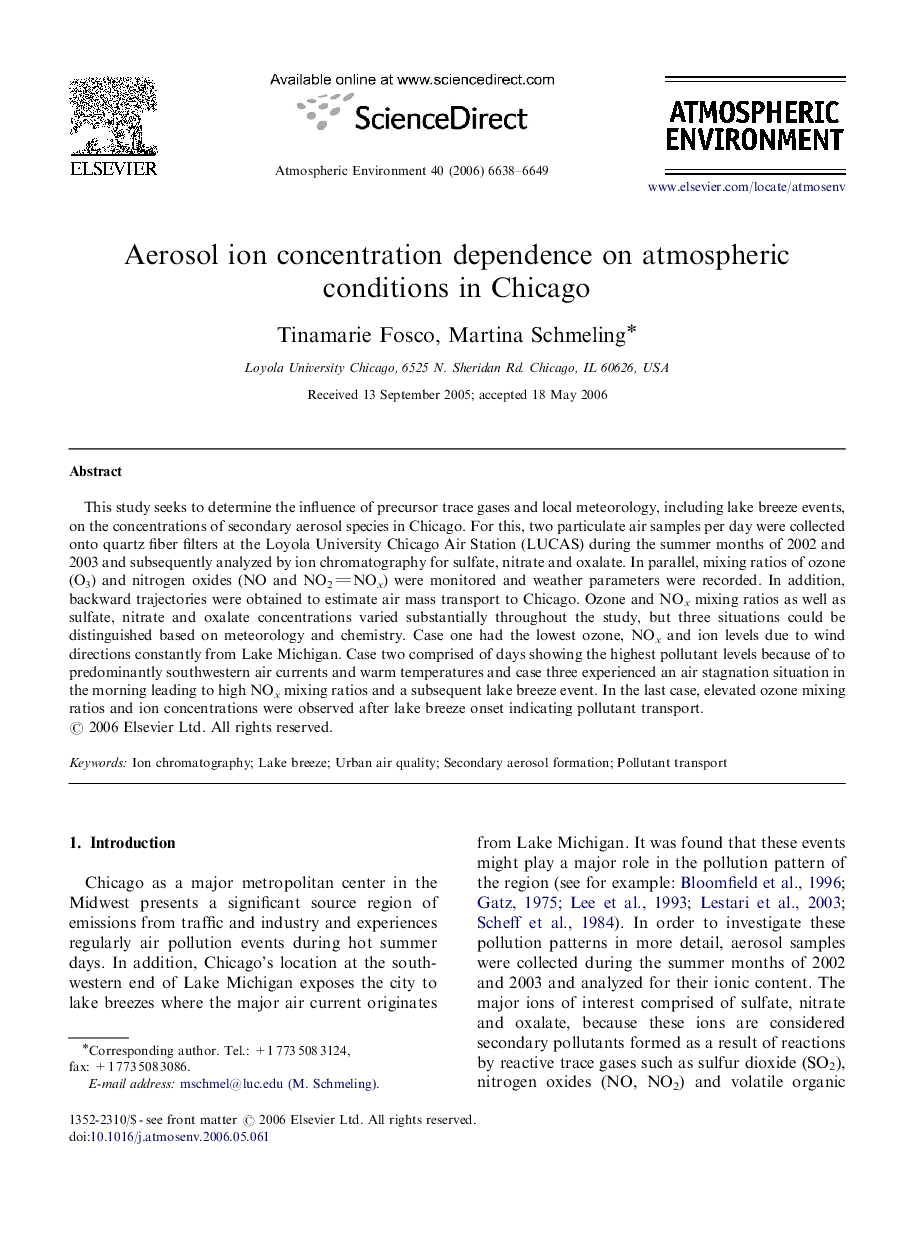| Article ID | Journal | Published Year | Pages | File Type |
|---|---|---|---|---|
| 4444002 | Atmospheric Environment | 2006 | 12 Pages |
This study seeks to determine the influence of precursor trace gases and local meteorology, including lake breeze events, on the concentrations of secondary aerosol species in Chicago. For this, two particulate air samples per day were collected onto quartz fiber filters at the Loyola University Chicago Air Station (LUCAS) during the summer months of 2002 and 2003 and subsequently analyzed by ion chromatography for sulfate, nitrate and oxalate. In parallel, mixing ratios of ozone (O3) and nitrogen oxides (NO and NO2NOx) were monitored and weather parameters were recorded. In addition, backward trajectories were obtained to estimate air mass transport to Chicago. Ozone and NOx mixing ratios as well as sulfate, nitrate and oxalate concentrations varied substantially throughout the study, but three situations could be distinguished based on meteorology and chemistry. Case one had the lowest ozone, NOx and ion levels due to wind directions constantly from Lake Michigan. Case two comprised of days showing the highest pollutant levels because of to predominantly southwestern air currents and warm temperatures and case three experienced an air stagnation situation in the morning leading to high NOx mixing ratios and a subsequent lake breeze event. In the last case, elevated ozone mixing ratios and ion concentrations were observed after lake breeze onset indicating pollutant transport.
